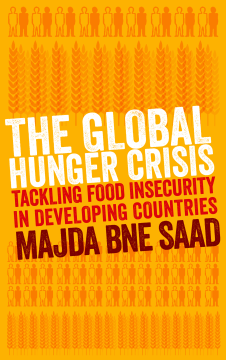
Additional Information
Book Details
Abstract
For billions across the world, the daily challenge is to find enough to eat to survive. Hunger is on the rise globally with more than 1.2 billion people suffering from food insecurity and poverty and rising food prices increasingly jeopardising access to food. But what are the causes for global hunger? And as the global population soars, what are the key food challenges?
In this deeply informative study, Majda Bne Saad identifies the causes for global hunger which are embedded in the current economic system, apportioning blame for global hunger on the West's continuing support for and subsidies to biofuels, which have created persistent and formidable new demands for food commodities. Saad proposes we fight-back, arguing for a 'second green revolution' to grow more food and by analysing the factors constraining low-income nations from achieving food security, she considers policies which could generate income and enhance individuals' entitlement to food.
'Mandatory reading for anyone who mistakenly believes that the global hunger crisis is over'
Stephen Devereux is a development economist with 25 years experience in food security, poverty and rural development in 13
African countries. He has been a Fellow of the Institute of Development Studies (IDS) at the
University of Sussex since 1996. He has written or edited 7 books on food security, famine and social protection, and has
published articles in more than 20 journals
Table of Contents
| Section Title | Page | Action | Price |
|---|---|---|---|
| Cover | Cover | ||
| Contents | vii | ||
| Illustrations | x | ||
| Abbreviations and Acronyms | xii | ||
| Preface | xv | ||
| Acknowledgements | xvii | ||
| Introduction | 1 | ||
| Part I - Food Security and Insecurity: Causes and Consequences | 7 | ||
| 1. Food Security | 9 | ||
| 2. Famine | 34 | ||
| 3. The World Food System: Challenges and Options | 66 | ||
| 4. Peasant Farming: Current and Future Challenges | 91 | ||
| Part II - Challenges and Options for Food Security | 117 | ||
| 5. Access to Land | 119 | ||
| 6. Rural Labour Markets | 141 | ||
| 7. Rural Financial Services and the Issue of Sustainability | 162 | ||
| 8. Water for Livelihoods | 183 | ||
| 9. Gender and Food Security: Invisibility Revisited | 209 | ||
| 10. Conclusion: Food Security in Perspective | 232 | ||
| Appendix | 251 | ||
| Notes | 254 | ||
| Bibliography | 260 | ||
| Index | 279 |
